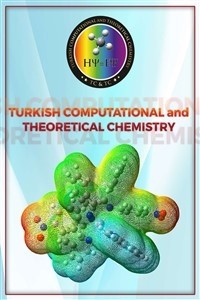In Silico study for investigating and predicting the activities of 7-Hydroxy-1,3-dioxo-2,3-dihydro-1H-pyrrolo[3,4-c]pyridine-4-carboxylate Derivatives as Potent Anti-HIV Agents
In Silico study for investigating and predicting the activities of 7-Hydroxy-1,3-dioxo-2,3-dihydro-1H-pyrrolo[3,4-c]pyridine-4-carboxylate Derivatives as Potent Anti-HIV Agents
pyridine-4-carboxylate Derivatives, QSAR, 7-Hydroxy-1, 3-dioxo-2 3-dihydro-1H-pyrrolo, 3, 4-c,
___
- [1] I.E. Emmanuel,U. Adamu, E. A. Stephen, Quantitative structure and activity relationship modelling study of anti-HIV-1 RT inhibitors: Genetic function approximation and density functional theory method. Journal computational methods in molecular Designs, 5 (2015) 61-76.
- [2] Di Santo, Inhibiting the HIV integration process: past, present and future. J med chem 51 (2014) 539-566.
- [3] D.S. Ruelas , W.C. Greene , An integrated overview of HIV-1 latency. Cell, Elsevier Inc. 155 (2013) 519-529.
- [4] S. Wang, P. Hortz, M. Schechter, L. Rong, Modelling the slow CD4 + T cell Decline in HIV-infected individuals, PLOS Computational Biology 11 (2015).
- [5] A.E. Shola, M.O. Idris, S. Tukur, A.U Saviour, G.A. Shallangwa, A. Uzairu, Theoretical modelling for investigating some active compounds as potent inhibitors against lung cancer. Journal of Engineering and exact science 5(2019) 0125-0136.
- [6] F. Soualmia, S. Belaidi, N. Tchouar, T. Lanez, Review of computational studies applied in new macrolide antibiotics, Journal of fundamental and applied sciences, 12 (2020) 392-415.
- [7] J.S. Jaworska, M. Comber, C.Auer , C.J.Van Leeuwen, Summary of a workshop on regulatory acceptance of QSARs for human health and environmental endpoints, Environmental Health Perspectives, 111 (2003) 1358–1360.
- [8] G. Liu, R. Luo, X. ZHANG, Y. ZHOU, J. LI, Y. ZHENG, H. Liu, Synthesis and Evaluation of Anti-HIV Activities of Novel 7-Hydroxy-1,3-dioxo-2,3-dihydro-1H-pyrrolo[3,4-c]pyridine-4-carboxylate Derivatives, 4 (2014) 573-580.
- [9] Y. He, C. Y. Liew, N. Sharma, S. K. Woo, Y. T. Chau, C. W. Yap, PaDEL-Descriptor: Open source software for PD-PK-T prediction, Journal of computational chemistry, 34 (2013) 604-610.
- [10] A.E.Shola, S. Uba, A. Uzairu, In Silico Study for investigating and predicting the activities of 1, 2, 4-Tirazole Derivatives as potent Anti-Tubercular agents. The Journal of Engineering and Exact Science 4 (2018) 0246-0254.
- [11] Alexander Tropsha. Best practices for QSAR model Development, validation and exploitation, Molecular Informatics. Inf. 29 (2010) 476-488.
- [12] A. Golbraikh; A Tropsha, Predictive QSAR modeling based on diversity sampling of experimental datasets for the training and test set selection, J Comput Aided Mol Des., 20 (2002) 269–276.
- [13] A. Racz, D. Bajusz, K. Heberger, Intercorrelation limits in molecular descriptors preselection for QSAR/QSPR, Molecular informatics 38 (2019) 1-6.
- [14] K. Roy, J.T. Leonard, On selection of training and test sets for the development of predictive QSAR models. QSAR and Combinatorial Science 25 (2006) 235-251.
- [15] M. Patel, N. Malle Shappa, S. Poonam, J. Varun, B. Sumit, L. Sandeep, A. Vikrant, D. Saurabh, B. Varun, QSAR studies as strategic approach in drug discovery. Med Chem 23 (2014) 4991-5007.
- [16] J.H. Holland, Adaptation in natural and artificial system, University of Michigan Press. (1975).
- [17] V. Ravinchandran, R. Harish, J. Abhishek, S. Shalini, P.V. Christapher, K.A. Ram, Validation of QSAR models-strategies and importance, International Journal of Drug Design and Discovery, 2 (2011) 511-519.
- [18] A.Tropsha, P. Grammatica, V.K. Gombar, The importance of being Earnest: Validation is the Absolute essential for successful Application and interpretation of QSAR models, QSAR and Combinatorial Science 22 (2003) 69-77.
- [19] K. Roy, Some aspects of validation of predictive quantitative structure-activity relationship models, Expert Opinion On Drug Discovery 2 (2007) 1567-1577.
- [20] A.S. Ugochukwu, G. A. Shallangwa, A. Uzairu, Quantitative Structure and Activity Relationship of 3a, 6a – Dihydro-1H-pyrrolo [3,4-c]pyrazole-4,6-dione Derivatives, Turkish Computational and Theoretical Chemistry. 4 (2020) 32-39.
- ISSN: 2587-1722
- Başlangıç: 2017
- Yayıncı: Koray SAYIN
An Optimization and Pharmacokinetic Studies of some Thymidine Derivatives
Sarkar M. A. KAWSAR, Mohammed Anowar HOSSAİN
Ahanonu SAVİOUR, Gideon Adamu SHALLANGWA, Adamu UZAİRU
Computational determination the reactivity of salbutamol and propranolol drugs
Rebaz OMER, Pelin KOPARIR, Lana AHMED, Metin KOPARIR
